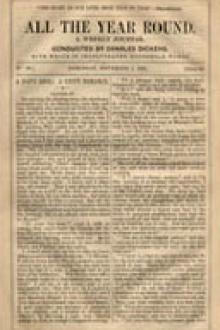Struggles and Triumphs P. T. Barnum (the beginning after the end read novel .TXT) 📖

- Author: P. T. Barnum
Book online «Struggles and Triumphs P. T. Barnum (the beginning after the end read novel .TXT) 📖». Author P. T. Barnum
By degrees the character of the stage performances was changed. The transient attractions of the Museum were constantly diversified, and educated dogs, industrious fleas, automatons, jugglers, ventriloquists, living statuary, tableaux, gipsies, Albinoes, fat boys, giants, dwarfs, ropedancers, live “Yankees,” pantomime, instrumental music, singing and dancing in great variety, dioramas, panoramas, models of Niagara, Dublin, Paris, and Jerusalem; Hannington’s dioramas of the Creation, the Deluge, Fairy Grotto, Storm at Sea; the first English Punch and Judy in this country, Italian Fantoccini, mechanical figures, fancy glass-blowing, knitting machines and other triumphs in the mechanical arts; dissolving views, American Indians, who enacted their warlike and religious ceremonies on the stage—these, among others, were all exceedingly successful.
I thoroughly understood the art of advertising, not merely by means of printer’s ink, which I have always used freely, and to which I confess myself so much indebted for my success, but by turning every possible circumstance to my account. It was my monomania to make the Museum the town wonder and town talk. I often seized upon an opportunity by instinct, even before I had a very definite conception as to how it should be used, and it seemed, somehow, to mature itself and serve my purpose. As an illustration, one morning a stout, hearty-looking man, came into my ticket-office and begged some money. I asked him why he did not work and earn his living? He replied that he could get nothing to do and that he would be glad of any job at a dollar a day. I handed him a quarter of a dollar, told him to go and get his breakfast and return, and I would employ him at light labor at a dollar and a half a day. When he returned I gave him five common bricks.
“Now,” said I, “go and lay a brick on the sidewalk at the corner of Broadway and Ann Street; another close by the Museum; a third diagonally across the way at the corner of Broadway and Vesey Street, by the Astor House: put down the fourth on the sidewalk in front of St. Paul’s Church, opposite; then, with the fifth brick in hand, take up a rapid march from one point to the other, making the circuit, exchanging your brick at every point, and say nothing to anyone.”
“What is the object of this?” inquired the man.
“No matter,” I replied; “all you need to know is that it brings you fifteen cents wages per hour. It is a bit of my fun, and to assist me properly you must seem to be as deaf as a post; wear a serious countenance; answer no questions; pay no attention to anyone; but attend faithfully to the work and at the end of every hour by St. Paul’s clock show this ticket at the Museum door; enter, walking solemnly through every hall in the building; pass out, and resume your work.”
With the remark that it was “all one to him, so long as he could earn his living,” the man placed his bricks and began his round. Half an hour afterwards, at least five hundred people were watching his mysterious movements. He had assumed a military step and bearing, and looking as sober as a judge, he made no response whatever to the constant inquiries as to the object of his singular conduct. At the end of the first hour, the sidewalks in the vicinity were packed with people all anxious to solve the mystery. The man, as directed, then went into the Museum, devoting fifteen minutes to a solemn survey of the halls, and afterwards returning to his round. This was repeated every hour till sundown and whenever the man went into the Museum a dozen or more persons would buy tickets and follow him, hoping to gratify their curiosity in regard to the purpose of his movements. This was continued for several days—the curious people who followed the man into the Museum considerably more than paying his wages—till finally the policeman, to whom I had imparted my object, complained that the obstruction of the sidewalk by crowds had become so serious that I must call in my “brick man.” This trivial incident excited considerable talk and amusement; it advertised me; and it materially advanced my purpose of making a lively corner near the Museum.
I am tempted to relate some of the incidents and anecdotes which attended my career as owner and manager of the Museum. The stories illustrating merely my introduction of novelties would more than fill this book, but I must make room for a few of them.
An actor, named La Rue, presented himself as an imitator of celebrated histrionic personages, including Macready, Forrest, Kemble, the elder Booth, Kean, Hamblin, and others. Taking him into the greenroom for a private rehearsal, and finding his imitations excellent, I engaged him. For three nights he gave great satisfaction, but early in the fourth evening he staggered into the Museum so drunk that he could hardly stand, and in half an hour he must be on the stage! Calling an assistant, we took La Rue between us, and marched him up Broadway as far as Chambers Street, and back to the lower end of the Park, hoping to sober him. At this point we put his head under a pump, and gave him a good ducking, with visible beneficial effect—then a walk around the Park, and another ducking—when he assured me that he should be able to give his





Comments (0)